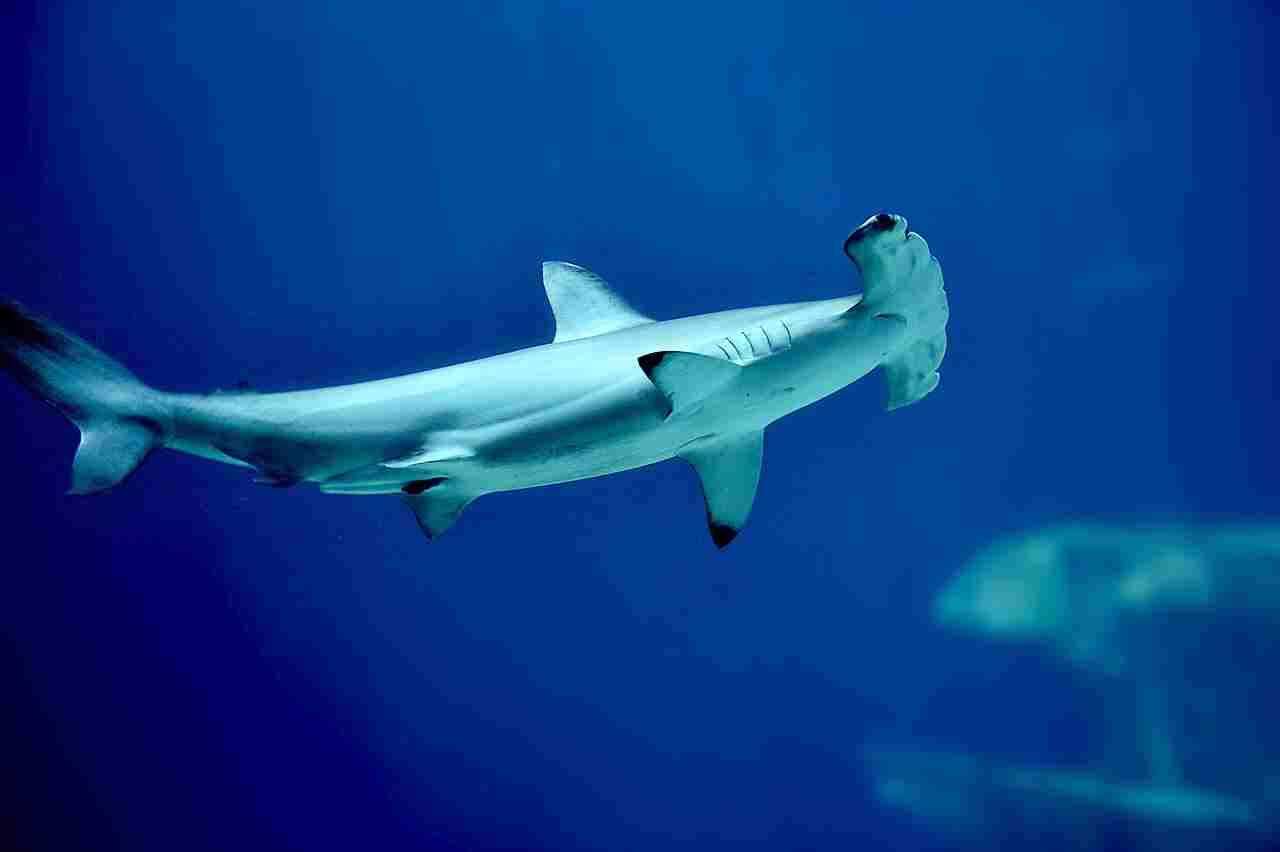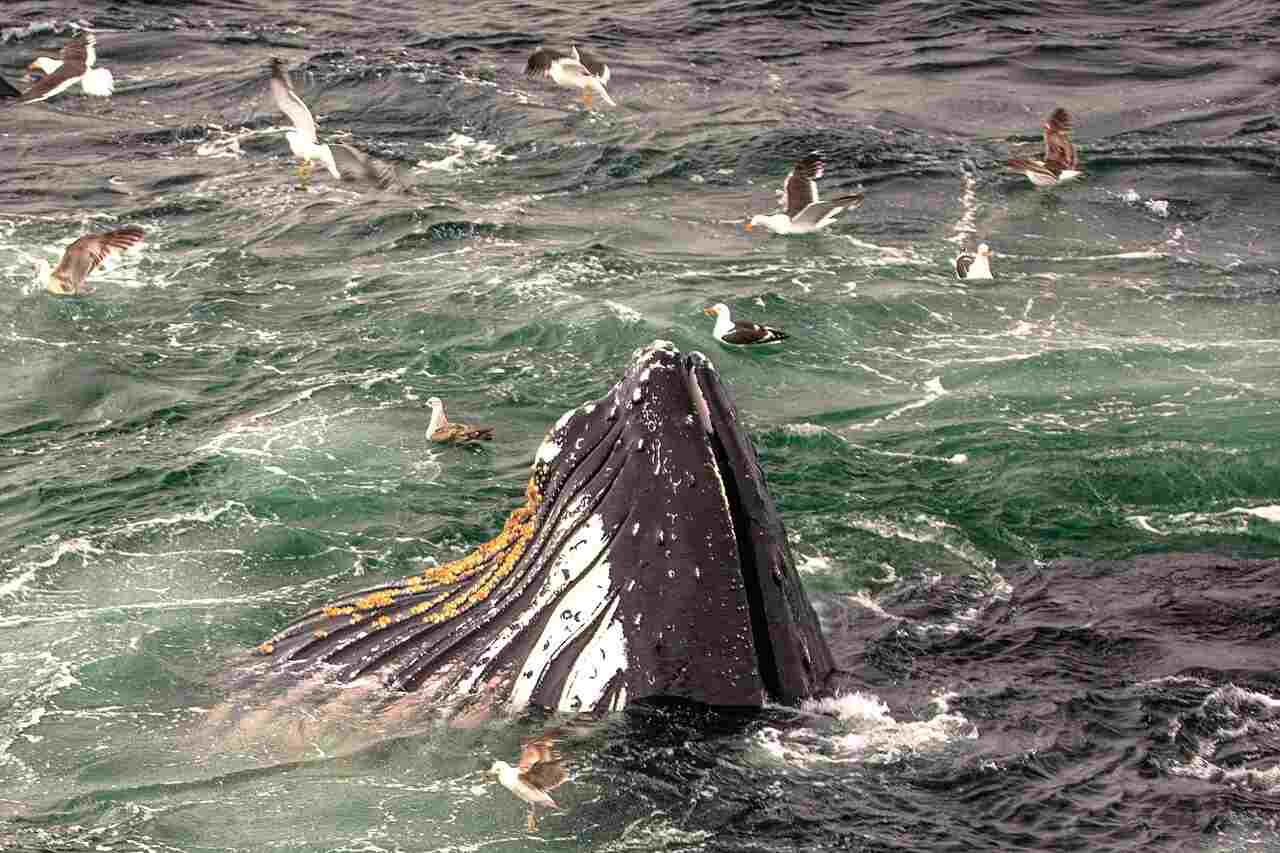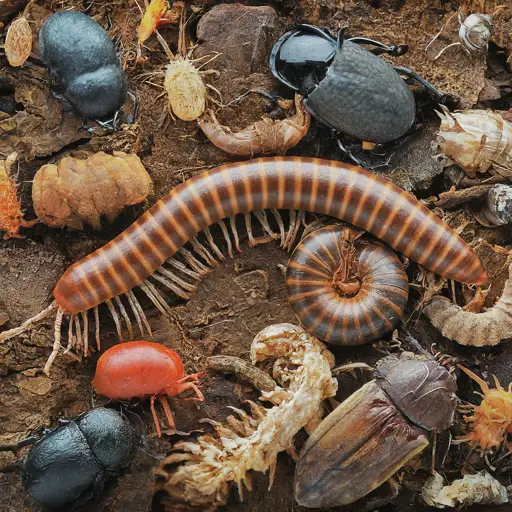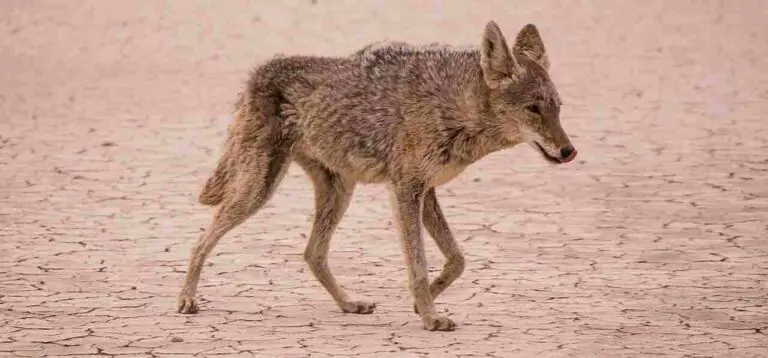7+ Carnivores in The Great Barrier Reef Discussed
Carnivores in the Great Barrier Reef are a diverse group of predators crucial for ecosystem balance. They include the Port Jackson Shark, Manta Ray, Hammerhead Shark, Cat Shark, Tiger Shark, White-tipped Reef Shark, Whale Shark, and Grouper. These carnivores fulfill essential roles in regulating prey populations and maintaining biodiversity within the reef ecosystem. Through conservation efforts and responsible interaction, their presence contributes to the health and resilience of the Great Barrier Reef.
1. Port Jackson Shark
The Port Jackson Shark, scientifically known as Heterodontus portusjacksoni, is a small, bottom-dwelling shark species found in the waters of the Great Barrier Reef. Characterized by their distinctive appearance, they have a blunt head, a wide mouth, and prominent, spiky dorsal fins. These sharks typically inhabit rocky reefs, seagrass beds, and sandy bottoms, where they feed on a variety of prey including crustaceans, mollusks, and small fish.
Despite being carnivorous predators, Port Jackson Sharks are relatively harmless to humans due to their small size and non-aggressive nature. They are known for their unique feeding behavior, using their specialized teeth to crush hard-shelled prey such as crabs and sea urchins. Their dentition, with sharp front teeth for gripping and grinding molars at the back, reflects their diverse diet and feeding strategy.
During the breeding season, which occurs from July to October, Port Jackson Sharks migrate to shallow coastal waters to mate and lay their eggs. These sharks are oviparous, meaning they lay eggs rather than giving birth to live young. The spiral-shaped egg cases, commonly referred to as “mermaid’s purses,” are anchored to the seabed by tough tendrils and provide protection for the developing embryos until they hatch.
While not as well-known as some other shark species, Port Jackson Sharks play a crucial role in maintaining the ecological balance of the Great Barrier Reef ecosystem. As mesopredators, they help regulate the populations of their prey species, contributing to the overall health and biodiversity of the reef habitat. Despite their low reproductive rate and vulnerability to overfishing, conservation efforts aimed at protecting these sharks are essential to ensure their continued presence in the reef ecosystem.
2. Manta Ray
Manta rays, belonging to the genus Mobula, are magnificent filter-feeding elasmobranchs found in the waters of the Great Barrier Reef. Unlike their close relatives, the stingrays, mantas lack a venomous tail spine and are known for their graceful swimming behavior and distinctive cephalic fins, which they use to guide food into their mouths. These gentle giants primarily feed on plankton, small fish, and crustaceans, which they filter from the water using specialized gill rakers while swimming.
Manta rays are characterized by their flattened bodies, large wing-like pectoral fins, and distinctive markings, which are unique to each individual and serve as identification markers for researchers and conservationists. Despite their imposing size, with some individuals reaching up to seven meters in wingspan, manta rays are harmless to humans and are often sought out by divers and snorkelers for unforgettable encounters.
The Great Barrier Reef provides important feeding grounds and habitat for manta rays, particularly along the outer reef slopes and in areas with strong currents that promote planktonic abundance. These majestic creatures are known to perform spectacular acrobatic displays, breaching the surface of the water and somersaulting in mid-air, possibly as a form of communication, courtship, or parasite removal.
Conservation efforts focused on protecting manta rays in the Great Barrier Reef include research initiatives to better understand their behavior, movements, and population dynamics, as well as the establishment of marine protected areas where these vulnerable species can thrive undisturbed. By safeguarding the habitats and prey resources upon which manta rays depend, conservationists aim to ensure the long-term survival of these iconic marine animals for future generations to enjoy.
3. Hammerhead Shark
Hammerhead sharks, belonging to the family Sphyrnidae, are among the most distinctive and easily recognizable shark species inhabiting the waters of the Great Barrier Reef. Named for their unique hammer-shaped heads, known as cephalofoils, these sharks possess enhanced sensory capabilities, including exceptional vision and electroreception, which aid in detecting prey and navigating their complex marine environment.
The Great Barrier Reef serves as an important habitat for several species of hammerhead sharks, including the scalloped hammerhead (Sphyrna lewini) and the smooth hammerhead (Sphyrna zygaena). These apex predators play a crucial role in maintaining the health and balance of the reef ecosystem by regulating the populations of their prey species, which primarily include fish, rays, and cephalopods.
Hammerhead sharks are known for their solitary and migratory behavior, often traveling long distances in search of food, breeding grounds, and suitable habitat. During the day, they are typically found patrolling the outer reef slopes and channels, where they hunt for prey using their keen senses and agile swimming abilities. At night, they may move into shallower waters to rest and avoid potential predators.
Despite their formidable appearance and predatory nature, hammerhead sharks pose minimal risk to humans and are rarely involved in unprovoked attacks. However, like many shark species, they face numerous threats, including overfishing, habitat degradation, and accidental bycatch in commercial fisheries. Conservation efforts aimed at protecting hammerhead sharks in the Great Barrier Reef include the implementation of shark sanctuaries, fishing regulations, and public awareness campaigns to promote coexistence between humans and these fascinating marine predators.
4. Cat Shark
Cat sharks, belonging to the family Scyliorhinidae, are a diverse group of small, bottom-dwelling sharks found in the Great Barrier Reef and oceans worldwide. Despite their name, cat sharks are not related to domestic cats but are named for their elongated bodies and cat-like eyes. These nocturnal predators are well-adapted to life on the reef, with camouflage patterns that help them blend into their surroundings and ambush unsuspecting prey.
Within the Great Barrier Reef, several species of cat sharks can be found, including the coral cat shark (Atelomycterus marmoratus) and the Australian swellshark (Cephaloscyllium laticeps). These sharks primarily feed on crustaceans, small fish, and benthic invertebrates, using their sharp teeth to capture and consume their prey under the cover of darkness.
Cat sharks exhibit a unique reproductive strategy known as oviparity, in which females lay eggs encased in tough, leathery capsules that resemble small pouches or purses. These egg cases are typically deposited in rocky crevices or hidden among coral rubble, providing protection for the developing embryos until they hatch. Once hatched, the juvenile cat sharks are fully independent and must fend for themselves in the reef environment.
Despite their small size and relatively low profile, cat sharks play an important role in the food web of the Great Barrier Reef ecosystem. As mesopredators, they help control the populations of smaller prey species, contributing to the overall balance and stability of the reef habitat. However, like many marine species, cat sharks face threats from habitat degradation, overfishing, and climate change, highlighting the need for conservation measures to ensure their continued survival in the face of environmental challenges.
5. Tiger Shark
Tiger sharks (Galeocerdo cuvier) are apex predators found in the waters of the Great Barrier Reef, known for their distinctive pattern of dark stripes and spots that resemble those of a tiger. These formidable sharks are among the largest predatory fish in the world, with adults reaching lengths of over five meters and weighing up to a tonne. Tiger sharks have a broad diet that includes fish, sea turtles, marine mammals, seabirds, and even other sharks, earning them the nickname “garbage cans of the sea” due to their indiscriminate feeding habits.
The Great Barrier Reef provides important habitat and foraging grounds for tiger sharks, particularly along the outer reef slopes and in areas with abundant prey resources. These highly adaptable predators are known for their opportunistic feeding behavior, scavenging for carrion and hunting actively to satisfy their voracious appetites.
Tiger sharks possess powerful jaws lined with serrated teeth, which enable them to crush and consume a wide variety of prey, including large bony fish and marine mammals. Their keen sense of smell, acute vision, and electroreception allow them to detect and locate potential prey from great distances, making them formidable hunters in their marine environment.
While tiger sharks are apex predators with few natural enemies, they are not immune to human-induced threats such as overfishing, habitat loss, and pollution. Additionally, their indiscriminate feeding habits and proximity to popular swimming and diving areas have led to occasional encounters with humans, though unprovoked attacks are rare. Conservation efforts aimed at protecting tiger sharks in the Great Barrier Reef include the implementation of fishing regulations, marine protected areas, and public education initiatives to promote coexistence and minimize conflicts between humans and these magnificent predators.
6. White-tipped Reef Shark
The white-tipped reef shark (Triaenodon obesus) is a common sight in the coral reefs of the Great Barrier Reef, known for its slender body, distinct white-tipped dorsal and caudal fins, and sleek grayish-brown coloration. These sharks are well-adapted to life on the reef, with streamlined bodies that allow them to maneuver effortlessly through narrow crevices and caves in search of prey.
White-tipped reef sharks are primarily nocturnal hunters, venturing out under the cover of darkness to forage for small fish, crustaceans, and cephalopods along the reef slopes and channels. They are known for their stealthy hunting techniques, using their acute senses of smell and electroreception to detect the slightest movements of potential prey hiding among the coral formations.
During the day, white-tipped reef sharks often congregate in groups or “resting aggregations” in shallow caves or under ledges, where they seek refuge from larger predators and conserve energy. These aggregations serve a social function, allowing the sharks to establish dominance hierarchies and engage in courtship behaviors during the breeding season, which typically occurs in the warmer months.
Despite their relatively small size and non-aggressive nature, white-tipped reef sharks play an important role in maintaining the health and balance of the Great Barrier Reef ecosystem. As mid-level predators, they help regulate the populations of smaller reef fish and crustaceans, preventing the overgrazing of coral and algae by herbivorous species. Conservation efforts aimed at protecting white-tipped reef sharks in the Great Barrier Reef include the establishment of marine protected areas and the implementation of sustainable fishing practices to ensure their continued presence in the reef ecosystem.
7. Whale Shark
The whale shark (Rhincodon typus) is the largest fish species in the world and a charismatic megafauna found in the waters of the Great Barrier Reef. These gentle giants are known for their distinctive checkerboard pattern of white spots and stripes on a dark gray to brownish background, as well as their enormous size, with adults reaching lengths of up to 12 meters or more.
Despite their massive size, whale sharks are filter feeders, sieving plankton, small fish, and crustaceans from the water using specialized gill rakers as they swim leisurely through the ocean with their mouths wide open. The Great Barrier Reef provides important feeding grounds for whale sharks, particularly during the annual migration of spawning coral, which results in an abundance of planktonic food resources.
Whale sharks are highly migratory species, traveling vast distances across ocean basins in search of food, mates, and suitable habitat. They are known to undertake long-distance migrations between feeding and breeding areas, often following predictable seasonal patterns based on water temperature and food availability.
Despite their global distribution, whale sharks face numerous threats, including habitat degradation, ship strikes, entanglement in fishing gear, and poaching for their fins and meat. Conservation efforts aimed at protecting whale sharks in the Great Barrier Reef include the establishment of marine protected areas, the implementation of regulations to minimize vessel interactions, and the promotion of responsible ecotourism practices to minimize disturbances to these vulnerable species.
8. Grouper
Groupers are a diverse group of predatory fish belonging to the family Serranidae, found in the waters of the Great Barrier Reef and reefs worldwide. These large-bodied fish are characterized by their stout, elongated bodies, prominent mouths, and powerful jaws lined with sharp teeth, which they use to ambush and capture prey with lightning-fast strikes.
Within the Great Barrier Reef, several species of groupers can be found, including the Queensland grouper (Epinephelus lanceolatus) and the coral trout (Plectropomus leopardus). Groupers are voracious predators that feed on a variety of prey, including fish, crustaceans, and cephalopods, often hunting in collaboration with other individuals to increase their hunting success.
Groupers play a crucial role in maintaining the health and balance of the Great Barrier Reef ecosystem by controlling the populations of smaller reef fish and invertebrates. As apex predators, they help regulate the structure and function of coral reef communities, preventing the overgrazing of algae and maintaining the resilience of coral habitats in the face of environmental stressors.
Despite their ecological importance, groupers face numerous threats, including overfishing, habitat destruction, and climate change. Many species of groupers are highly prized by commercial and recreational fishermen for their delicious flesh and are often targeted for consumption or sale in seafood markets. Conservation efforts aimed at protecting groupers in the Great Barrier Reef include the establishment of marine protected areas, the implementation of fishing regulations, and public education initiatives to promote sustainable fishing practices and responsible seafood consumption.
*Summary
Port Jackson Shark:
Small, bottom-dwelling shark with a blunt head and spiky dorsal fins.
Feeds on crustaceans, mollusks, and small fish.
Oviparous, laying eggs known as “mermaid’s purses” in shallow coastal waters.
Plays a crucial role in maintaining the ecological balance of the Great Barrier Reef ecosystem.
Manta Ray:
Filter-feeding elasmobranch with a wingspan of up to seven meters.
Feeds on plankton, small fish, and crustaceans.
Performs acrobatic displays and breaching behaviors.
Conservation efforts focus on research, marine protected areas, and public awareness.
Hammerhead Shark:
Distinctive shark with a hammer-shaped head and keen senses.
Regulates populations of prey species including fish and rays.
Solitary and migratory, hunting along reef slopes and channels.
Faces threats from overfishing and habitat degradation.
Cat Shark:
Small, nocturnal shark with cat-like eyes.
Feeds on crustaceans, small fish, and benthic invertebrates.
Oviparous, laying eggs in rocky crevices.
Plays an important role in controlling populations of smaller prey species.
Tiger Shark:
Large apex predator with a broad diet.
Feeds on fish, sea turtles, and marine mammals.
Faces threats from overfishing and habitat loss.
Conservation efforts focus on fishing regulations and public education.
White-tipped Reef Shark:
Common reef shark with white-tipped fins.
Nocturnal hunter of small fish and crustaceans.
Forms resting aggregations during the day.
Plays a role in maintaining reef ecosystem balance.
Whale Shark:
Largest fish species, filter-feeder.
Feeds on plankton and small fish.
Highly migratory, facing threats from habitat degradation and poaching.
Conservation efforts include marine protected areas and responsible ecotourism.
Grouper:
Large predatory fish with powerful jaws.
Feeds on fish, crustaceans, and cephalopods.
Plays a crucial role in controlling reef fish populations.
Faces threats from overfishing and habitat destruction.
| Carnivores in the Great Barrier Reef | Summary |
| Port Jackson Shark |
Small, bottom-dwelling shark. Feeds on crustaceans, mollusks, and small fish. Oviparous, laying eggs in shallow coastal waters. Plays a crucial role in maintaining reef ecosystem balance.
|
| Manta Ray |
Filter-feeding elasmobranch with a wingspan of up to seven meters. Feeds on plankton, small fish, and crustaceans. Conservation efforts focus on research, marine protected areas, and public awareness.
|
| Hammerhead Shark |
Distinctive shark with a hammer-shaped head and keen senses. Regulates populations of prey species. Faces threats from overfishing and habitat degradation.
|
| Cat Shark |
Small, nocturnal shark with cat-like eyes. Feeds on crustaceans, small fish, and benthic invertebrates. Plays an important role in controlling prey populations.
|
| Tiger Shark |
Large apex predator with a broad diet. Faces threats from overfishing and habitat loss. Conservation efforts focus on fishing regulations and public education.
|
| White-tipped Reef Shark |
Common reef shark with white-tipped fins. Nocturnal hunter of small fish and crustaceans. Plays a role in maintaining reef ecosystem balance.
|
| Whale Shark |
Largest fish species, filter-feeder. Feeds on plankton and small fish. Faces threats from habitat degradation and poaching. Conservation efforts include marine protected areas and responsible ecotourism.
|
| Grouper |
Large predatory fish with powerful jaws. Feeds on fish, crustaceans, and cephalopods. Plays a crucial role in controlling reef fish populations. Faces threats from overfishing and habitat destruction.
|
FAQs about Carnivores in the Great Barrier Reef
- Q: Are there any dangerous carnivores in the Great Barrier Reef?
- A: While some carnivores like tiger sharks are apex predators, they typically don’t pose a significant threat to humans unless provoked. Generally, the reef’s carnivores are not considered dangerous to humans.
- Q: How can I see carnivores like sharks and rays in the Great Barrier Reef?
- A: Snorkeling and diving tours offer opportunities to encounter carnivores like sharks and rays in their natural habitat. Many operators provide guided experiences with safety measures in place.
- Q: Are there any conservation efforts focused specifically on carnivores in the Great Barrier Reef?
- A: Yes, conservation efforts include establishing marine protected areas, implementing fishing regulations, and conducting research to better understand carnivore populations and behavior.
- Q: What should I do if I encounter a carnivore while snorkeling or diving in the Great Barrier Reef?
- A: Remain calm and avoid sudden movements. Most carnivores are not aggressive towards humans unless provoked. Keep a safe distance and allow the animal to pass without disturbing it.
-
Q: How do carnivores contribute to the overall ecosystem of the Great Barrier Reef?
- A: Carnivores play crucial roles in regulating prey populations, maintaining ecosystem balance, and promoting biodiversity. They help control herbivore populations, preventing overgrazing of coral and algae.













